Synthesis of Chromium Carbide Nanopowders by Microwave Heating and Their Composition and Microstructure Change under Gamma Ray Irradiation
Abstract
:1. Introduction
2. Results and Discussion
3. Materials and Methods
4. Conclusions
Author Contributions
Funding
Conflicts of Interest
References
- Schwarzkopf, P.; Kieffer, R.; Leszynski, W.; Benesovsky, F. Refractory Hard Metals: Borides, Carbides, Nitrides, and Silicides; Macmillan: New York City, NY, USA, 1953. [Google Scholar]
- James, F.S.; William, A. CRC Materials Science and Engineering Handbook, 3rd ed.; CRC Press: Boca Raton, FL, USA, 2001. [Google Scholar]
- Kahrizsangi, R.E.; Zadeh, H.M.; Nemati, V. Synthesis of chromium carbide by reduction of chromium oxide with methane. Int. J. Refract. Met. Hard Mater. 2010, 28, 412–415. [Google Scholar] [CrossRef]
- Haynes, W.M. (Ed.) CRC Handbook of Chemistry and Physics, 91st ed.; CRC Press/Taylor and Francis: Boca Raton, FL, USA, 2010. [Google Scholar]
- Kang, Y.M.; Cui, X.W.; Dong, Z.Q.; Chen, W.X. Preparation, microstructure and properties of chromium carbide/epoxy composite. Mater. Design 2016, 92, 356–361. [Google Scholar] [CrossRef]
- Boccarusso, L.; Scherillo, F.; Prisco, U. Effects of Cr3C2 Addition on Wear Behaviour of WC-Co Based Cemented Carbides. Metals 2018, 8, 895. [Google Scholar] [CrossRef]
- Loubière, S.; Laurent, C.; Bonino, J.P.; Rousset, A. A metastable chromium carbide powder obtained by carburization of a metastable chromium oxide. J. Alloy. Compd. 1996, 243, 59–66. [Google Scholar] [CrossRef]
- Hirota, K.; Mitani, K.; Yoshinaka, M.; Yamaguch, O. Simultaneous synthesis and consolidation of chromium carbides (Cr3C2, Cr7C3 and Cr23C6) by pulsed electric-current pressure sintering. Mat. Sci. Eng. A 2005, 399, 154–160. [Google Scholar] [CrossRef]
- Xing, T.Y.; Cui, X.W.; Chen, W.X.; Yang, R.S. Synthesis of porous chromium carbides by carburization. Mater. Chem. Phys. 2011, 128, 181–186. [Google Scholar] [CrossRef]
- Koswon, K.; Shon, I.J. Synthesis of Cr3C2 by SHS process. Scr. Mater. 1997, 17, 889–895. [Google Scholar] [CrossRef]
- Dai, L.; Lu, Y.; Wang, X.Y.; Zhua, J.; Li, Y.H.; Wang, L. Production of nano-sized chromium carbide powders from Cr2O3/C precursors by direct electrochemical reduction in molten calcium chloride. Int. J. Refract. Met. Hard Mater. 2015, 51, 153–159. [Google Scholar] [CrossRef]
- Sharafi, S.; Gomari, S. Effects of milling and subsequent consolidation treatment on the microstructural properties and hardness of the nanocrystalline chromium carbide powders. Int. J. Refract. Met. Hard Mater. 2012, 30, 57–63. [Google Scholar] [CrossRef]
- Suryanarayana, C. Mechanical alloying and milling. Prog. Mater. Sci. 2001, 46, 1–184. [Google Scholar] [CrossRef]
- Syazwan, M.M.; Azis, R.S.; Hashim, M.; Ismayadi, I.; Kanagesan, S.; Hapishah, A.N. Co-Ti-and Mn-Ti-substituted barium ferrite for electromagnetic property tuning and enhanced microwave absorption synthesized via mechanical alloying. J. Aust. Ceram. Soc. 2017, 53, 465–474. [Google Scholar] [CrossRef]
- Zhao, C.N.; Zhang, J.J.; Li, Y.; Meng, X.; Li, H.B. Microwave-assisted extraction of phenolic compounds from melastoma sanguineum fruit: Optimization and identification. Molecules 2018, 23, 2498. [Google Scholar] [CrossRef] [PubMed]
- Gunnewiek, R.F.K.; Kiminami, R.H.G.A. Fast synthesis of porous chromium carbide by microwave-assisted carbothermal reduction. Ceram. Int. 2017, 43, 10614–10618. [Google Scholar] [CrossRef]
- Silambarasan, D.; Surya, V.J.; Iyakutti, K.; Asokanf, K.; Vasu, V.; Kawazoe, Y. Gamma (γ)-ray irradiated multi-walled carbon nanotubes (MWCNTs) for hydrogen storage. Appl. Surf. Sci. 2017, 418, 49–55. [Google Scholar] [CrossRef]
- Maity, T.K.; Sharma, S.L.; Chourasiya, G. The real-time gamma radiation dosimetry with TeO2 thin films. Radiat. Meas. 2012, 47, 145–148. [Google Scholar] [CrossRef]
- Safibonab, B.; Reyhani, A.; Nozad Golikand, A.; Mortazavi, S.Z.; Mirershadi, S.; Ghoranneviss, M. Improving the surface properties of multi-walled carbon nanotubes after irradiation with gamma rays. Appl. Surf. Sci. 2011, 258, 766–773. [Google Scholar] [CrossRef]
- Soleimanpour, A.M.; Hou, Y.; Jayatissa, A.H. The effect of UV irradiation on nanocrysatlline zinc oxide thin films related to gas sensing characteristics. Appl. Surf. Sci. 2011, 257, 5398–5402. [Google Scholar] [CrossRef]
- Kleut, D.; Jovanovic, S.; Markovic, Z.; Kepic, D.; Tosic, D.; Romcevic, N. Comparison of structural properties of pristine and gamma irradiated single-wall carbon nanotubes: Effects of medium and irradiation dose. Mater. Charact. 2012, 72, 37–45. [Google Scholar] [CrossRef]
- Naim, A.A.; Alnaim, N.; Ibrahim, S.S.; Metwally, S.M. Effect of gamma irradiation on the mechanical properties of PVC/ZnO polymer nanocomposite. J. Radiat. Res. 2017, 10, 165–171. [Google Scholar] [CrossRef]
- Matyi, R.J.; Schwartz, L.H.; Butt, J.B. Particle size, particle size distribution, and related measurements of supported metal catalysts. Catal. Rev. Sci. Eng. 1987, 29, 41–99. [Google Scholar] [CrossRef]
- Zhao, Z.W.; Zheng, H.J.; Wang, Y.; Mao, S.; Niu, J.; Chen, Y.; Shang, M.Y. Synthesis of chromium carbide (Cr3C2) nanopowders by the carbonization of the precursor. Int. J. Refract. Met. Hard Mater. 2011, 29, 614–617. [Google Scholar] [CrossRef]
- Zhao, Z.W.; Zheng, H.J.; Zhang, S.; Song, W.; Mao, S.; Chen, Y. Effect of reaction time on phase composition and microstructure of chromium carbide nanopowders. Int. J. Refract. Met. Hard Mater. 2013, 41, 558–562. [Google Scholar] [CrossRef]
- Gogebakan, M.; Kursun, C.; Eckert, J. Formation of new Cu-based nanocrystalline powders by mechanical alloying technique. Powder Technol. 2013, 247, 172–177. [Google Scholar] [CrossRef]
- Abbas, I.K.; Najam, L.A.; AuobSulaiman, A.U. The effect of gamma irradiation on the structural properties of porous silicon. Int. J. Phys. 2015, 3, 1–7. [Google Scholar] [CrossRef]
- Mahajan, M.; Rajpoot, S.; Pandey, O.P. In-situ synthesis of chromium carbide (Cr3C2) nanopowders by chemical-reduction route. Int. J. Refract. Met. Hard Mater. 2015, 50, 113–119. [Google Scholar] [CrossRef]
- Zhao, Z.W.; Zheng, H.J.; Liu, S.J.; Shen, J.H.; Song, W.Q.; Chen, J.S. Low temperature synthesis of chromium carbide (Cr3C2) nanopowders by a novel precursor method. Int. J. Refract. Met. Hard Mater. 2015, 48, 46–50. [Google Scholar] [CrossRef]
- Preiss, H.; Schultzeb, D.; Szulzewsky, K. Carbothermal synthesis of vanadium and chromium carbides from solution-derived precursors. J. Eur. Ceram. Soc. 1999, 19, 187–194. [Google Scholar] [CrossRef]
- Rai, V.N.; Raj Shekhar, B.N.; Kher, S.; Deb, S.K. Effect of gamma ray irradiation on optical properties of Nd doped phosphate glass. J. Lumin. 2010, 130, 582–586. [Google Scholar] [CrossRef]
Sample Availability: Samples of the compounds are not available from the authors. |
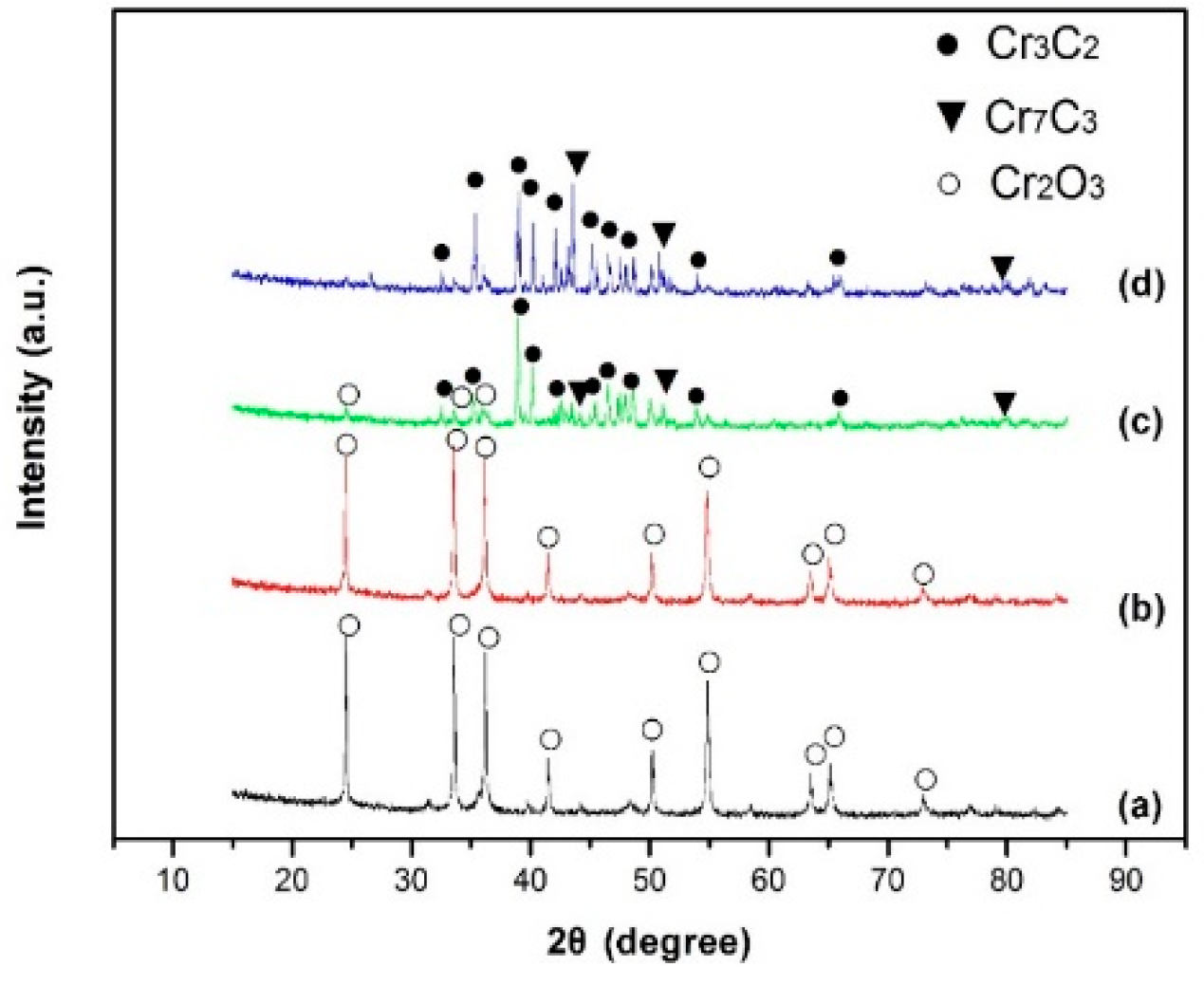
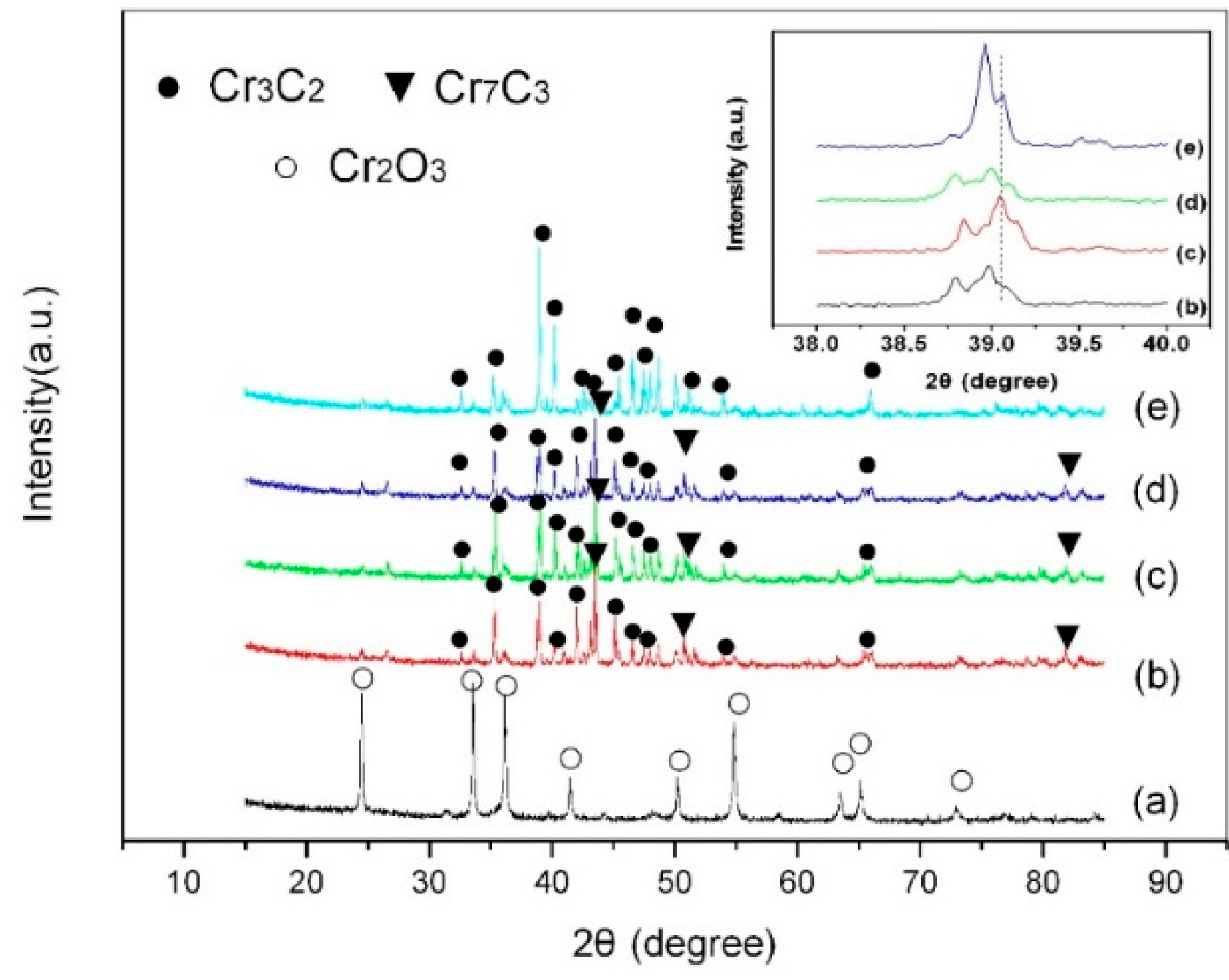
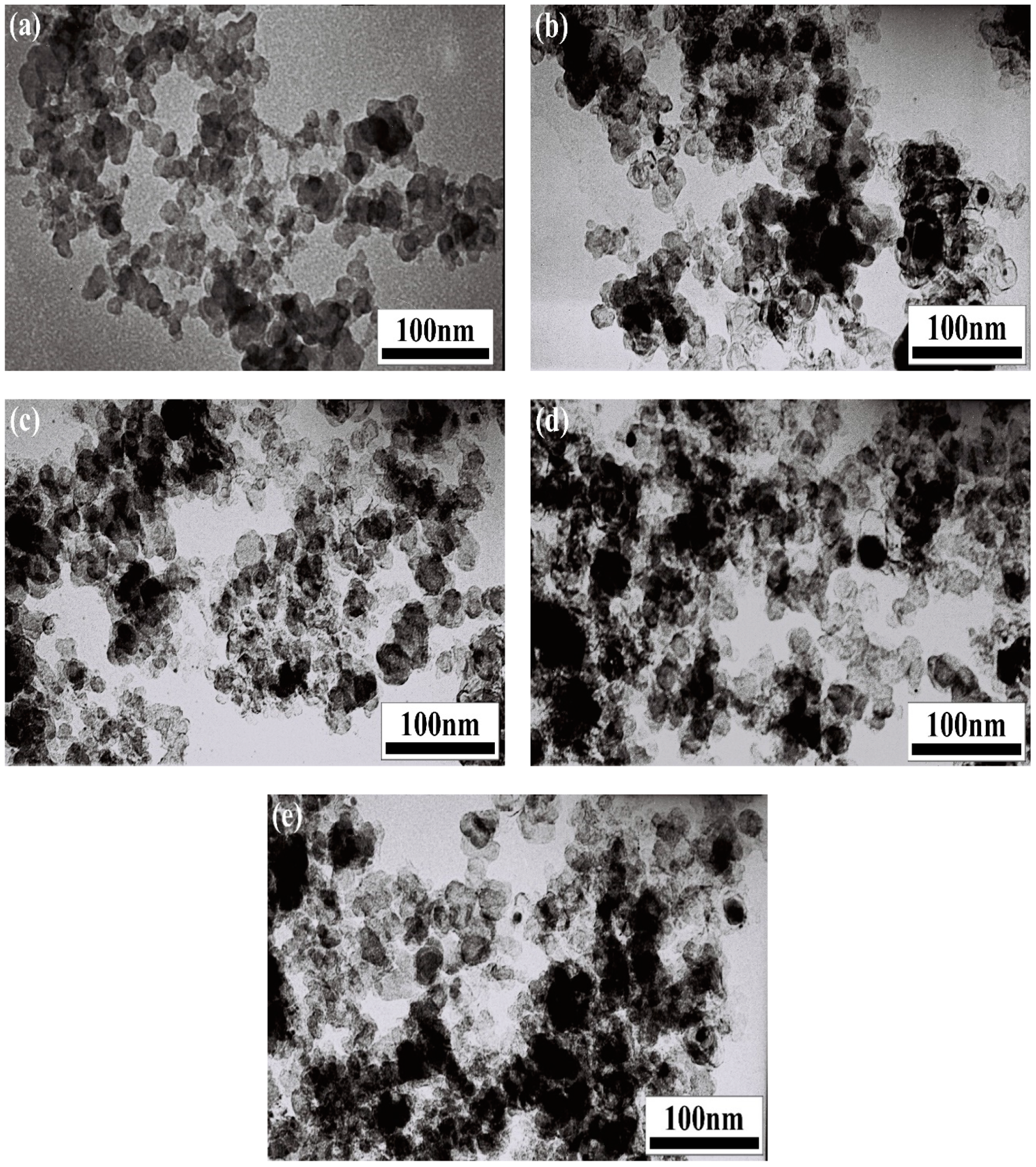
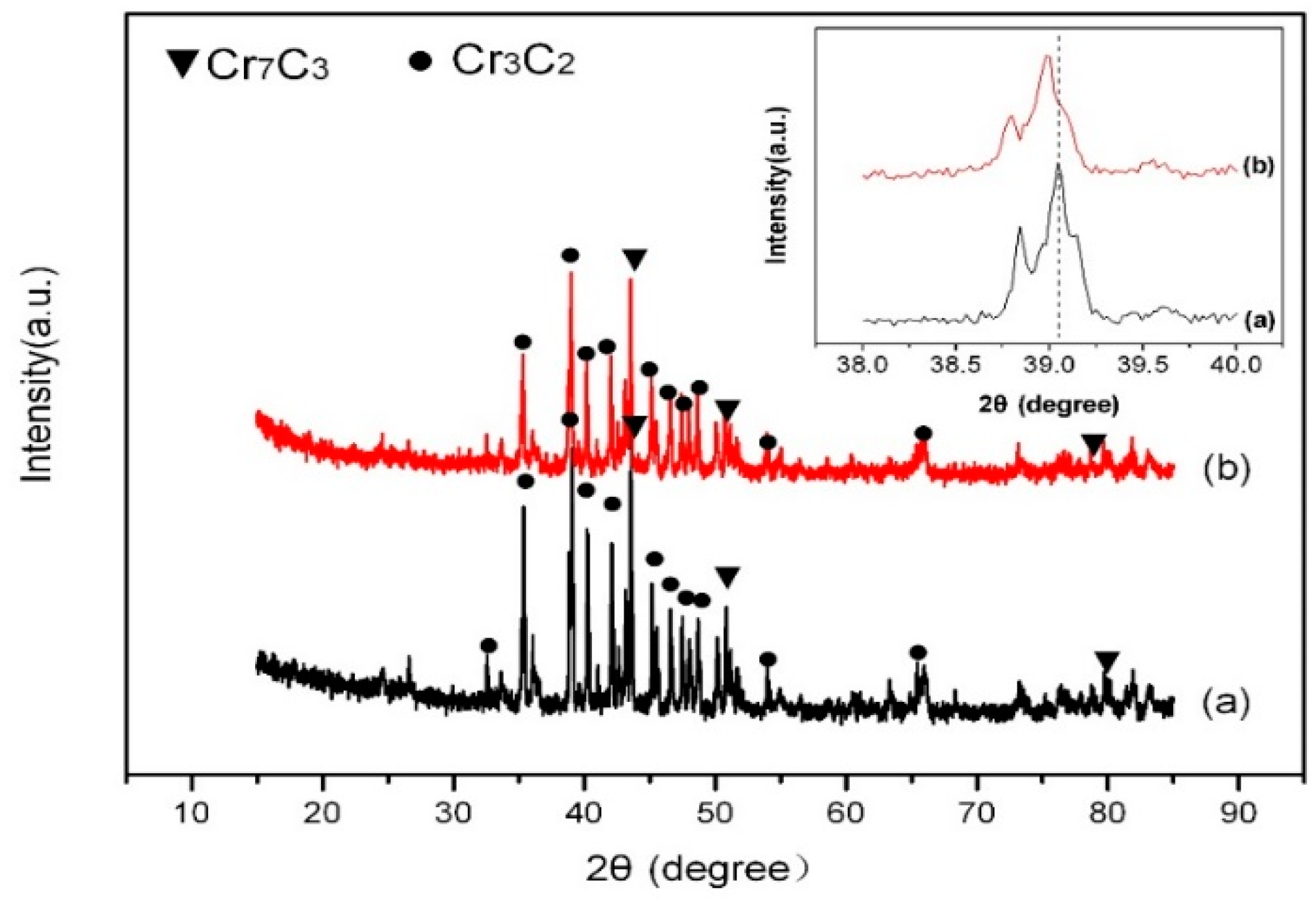
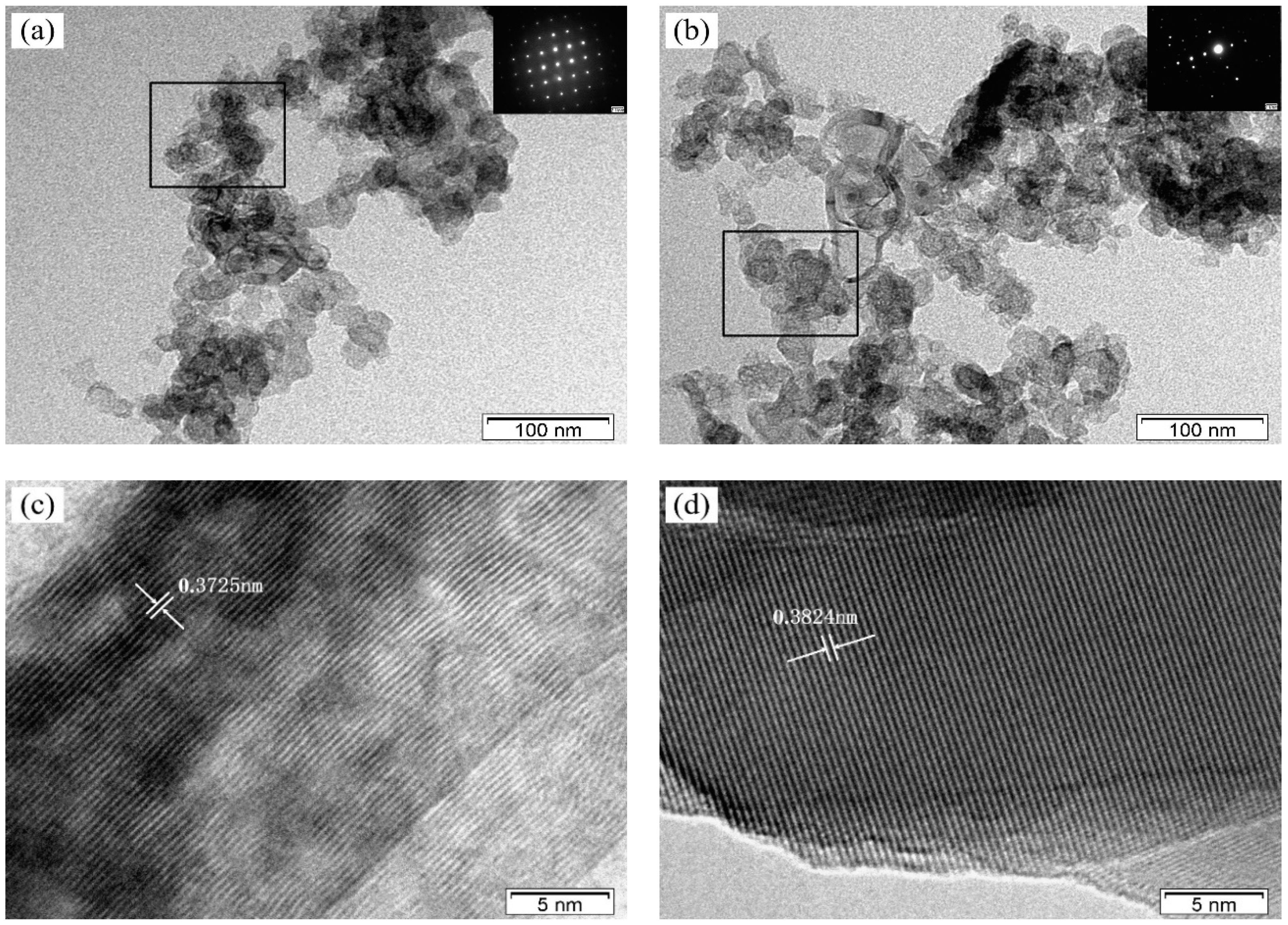
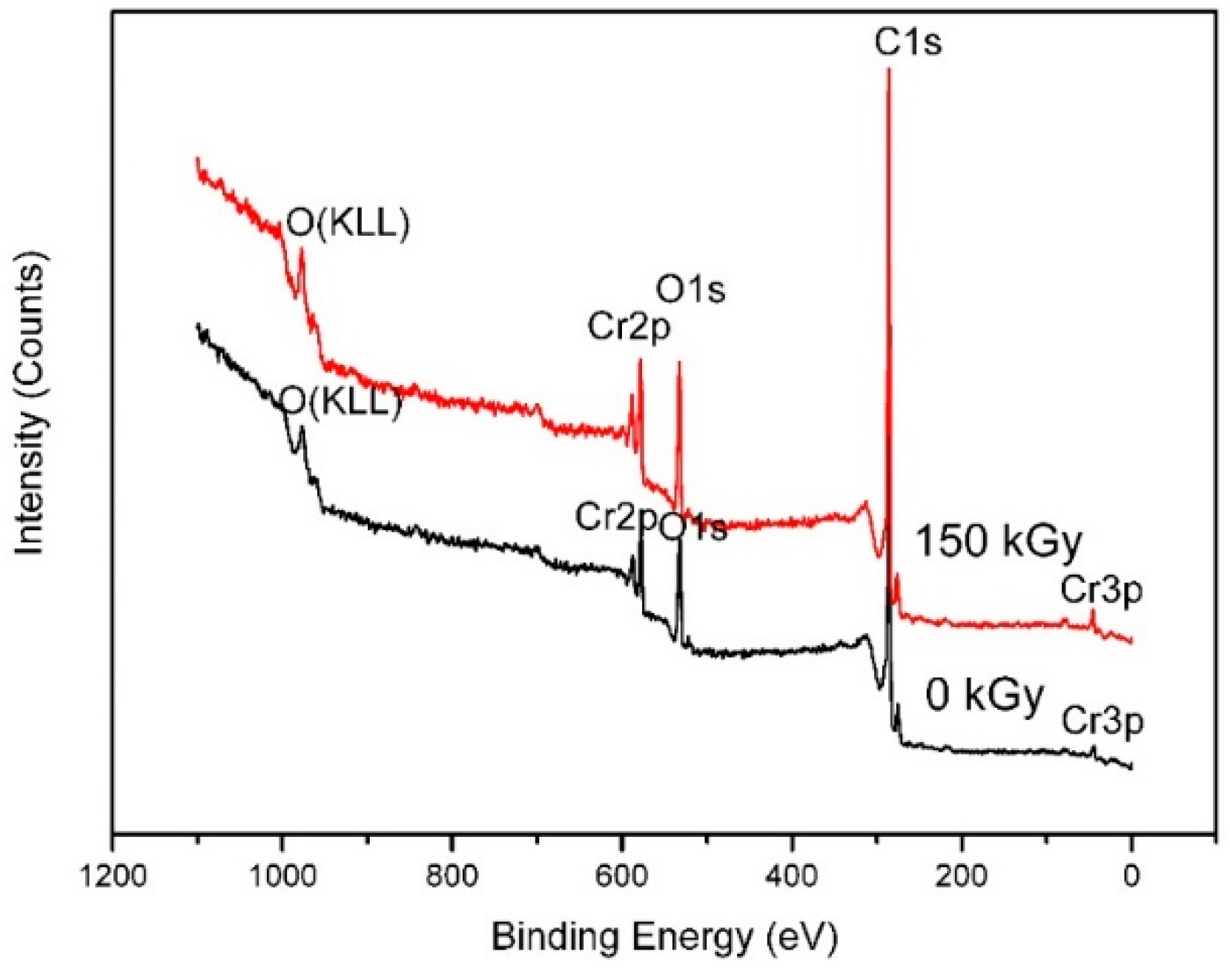
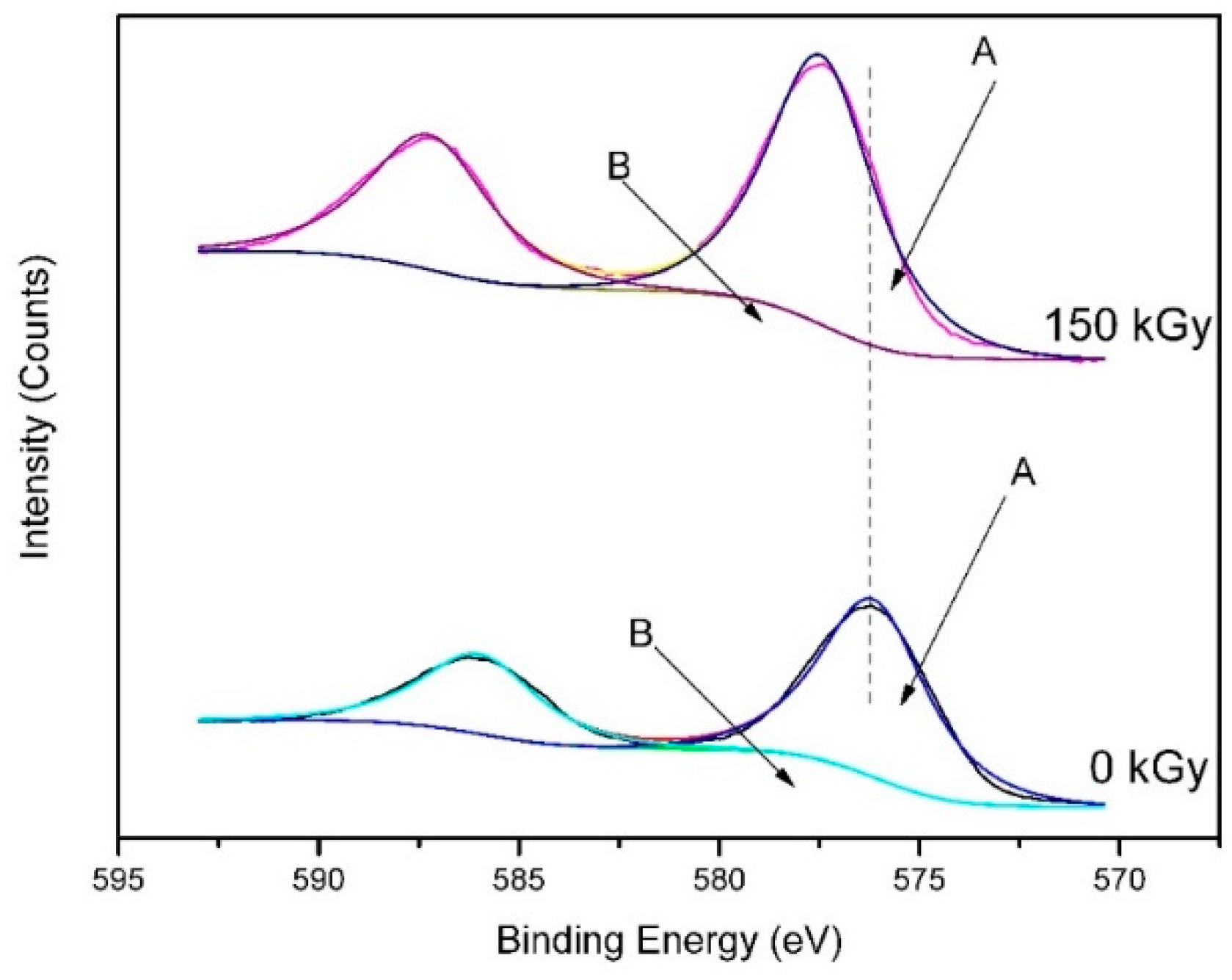
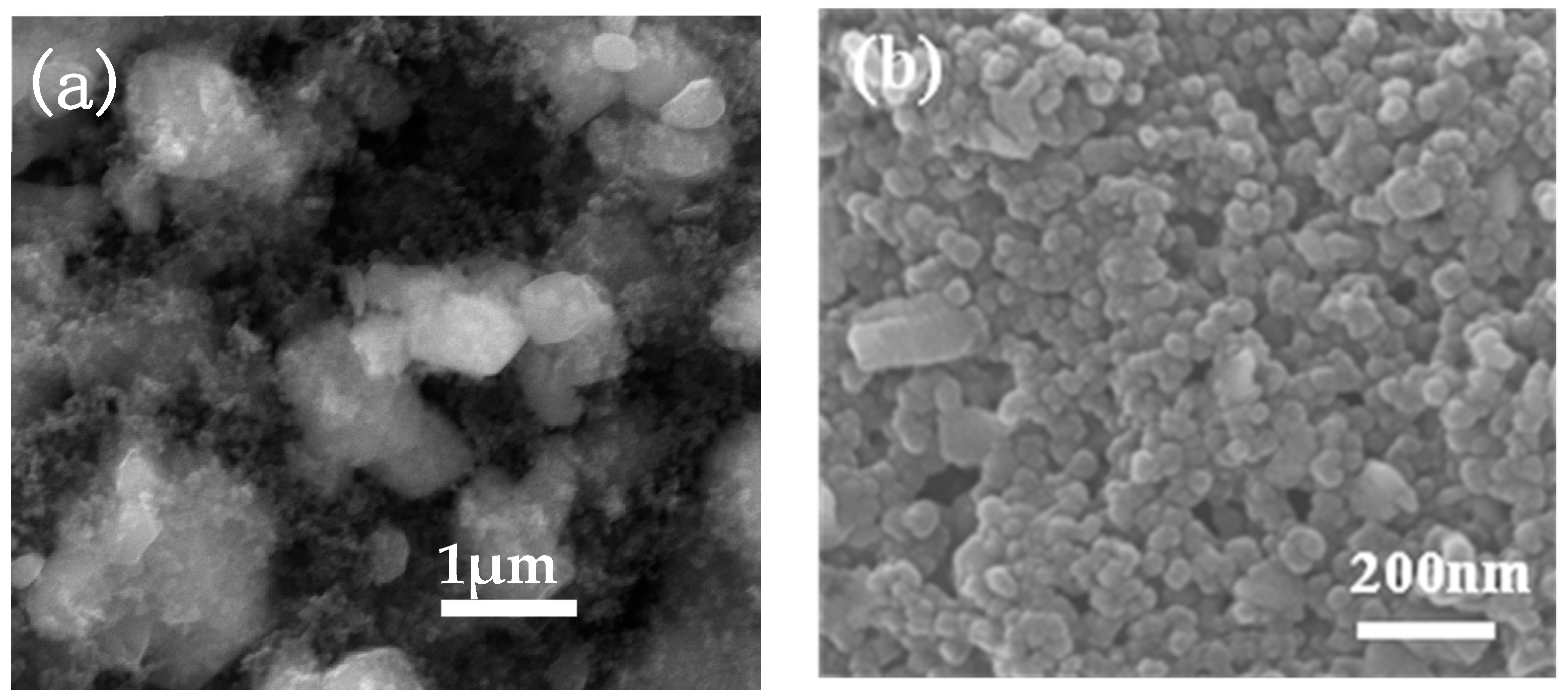
© 2018 by the authors. Licensee MDPI, Basel, Switzerland. This article is an open access article distributed under the terms and conditions of the Creative Commons Attribution (CC BY) license (http://creativecommons.org/licenses/by/4.0/).
Share and Cite
Jin, K.; Jia, Y.; Zhao, Z.; Song, W.; Wang, S.; Guan, C. Synthesis of Chromium Carbide Nanopowders by Microwave Heating and Their Composition and Microstructure Change under Gamma Ray Irradiation. Molecules 2019, 24, 16. https://doi.org/10.3390/molecules24010016
Jin K, Jia Y, Zhao Z, Song W, Wang S, Guan C. Synthesis of Chromium Carbide Nanopowders by Microwave Heating and Their Composition and Microstructure Change under Gamma Ray Irradiation. Molecules. 2019; 24(1):16. https://doi.org/10.3390/molecules24010016
Chicago/Turabian StyleJin, Kai, Yuanbo Jia, Zhiwei Zhao, Weiqiang Song, Shun Wang, and Chunlong Guan. 2019. "Synthesis of Chromium Carbide Nanopowders by Microwave Heating and Their Composition and Microstructure Change under Gamma Ray Irradiation" Molecules 24, no. 1: 16. https://doi.org/10.3390/molecules24010016
APA StyleJin, K., Jia, Y., Zhao, Z., Song, W., Wang, S., & Guan, C. (2019). Synthesis of Chromium Carbide Nanopowders by Microwave Heating and Their Composition and Microstructure Change under Gamma Ray Irradiation. Molecules, 24(1), 16. https://doi.org/10.3390/molecules24010016




